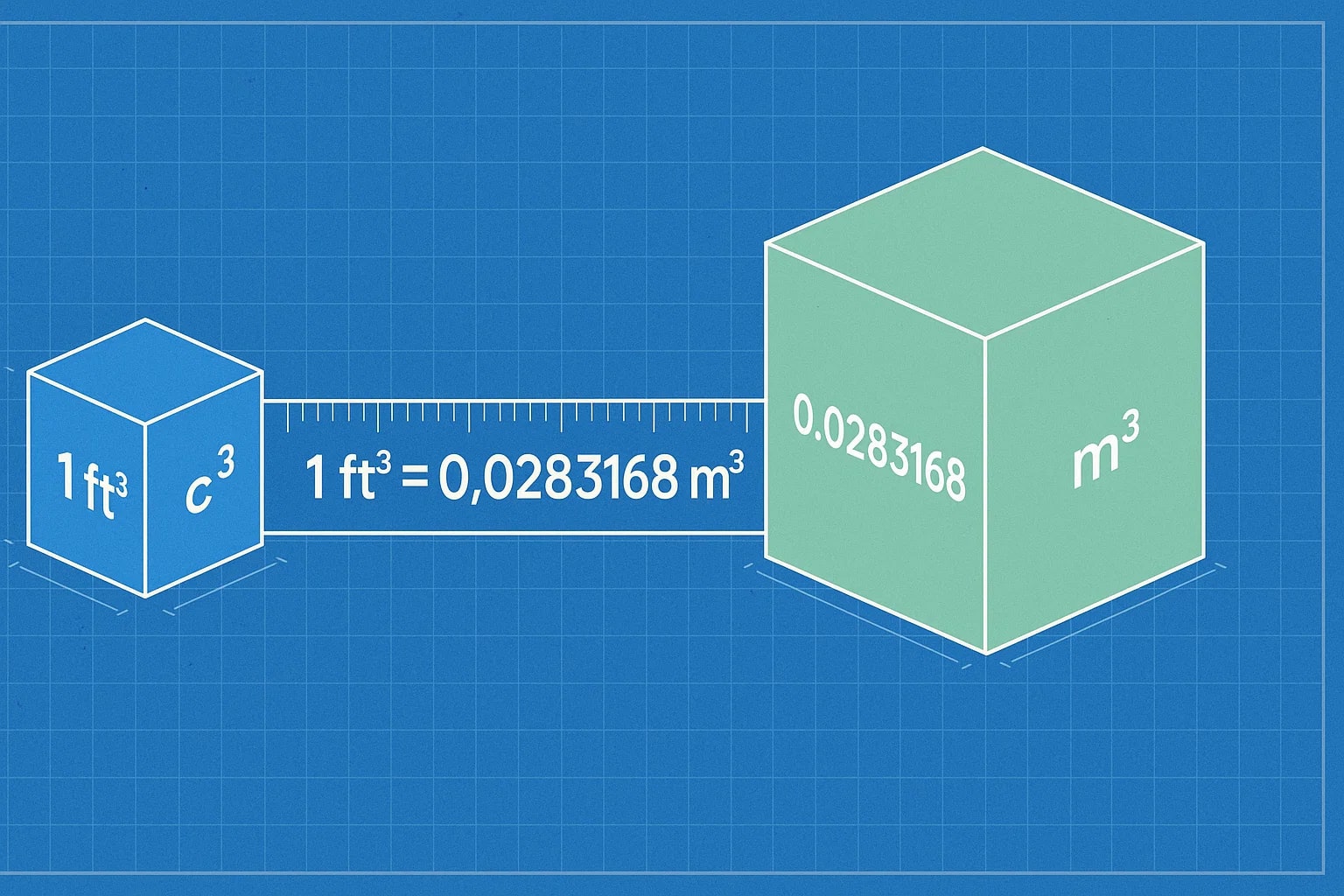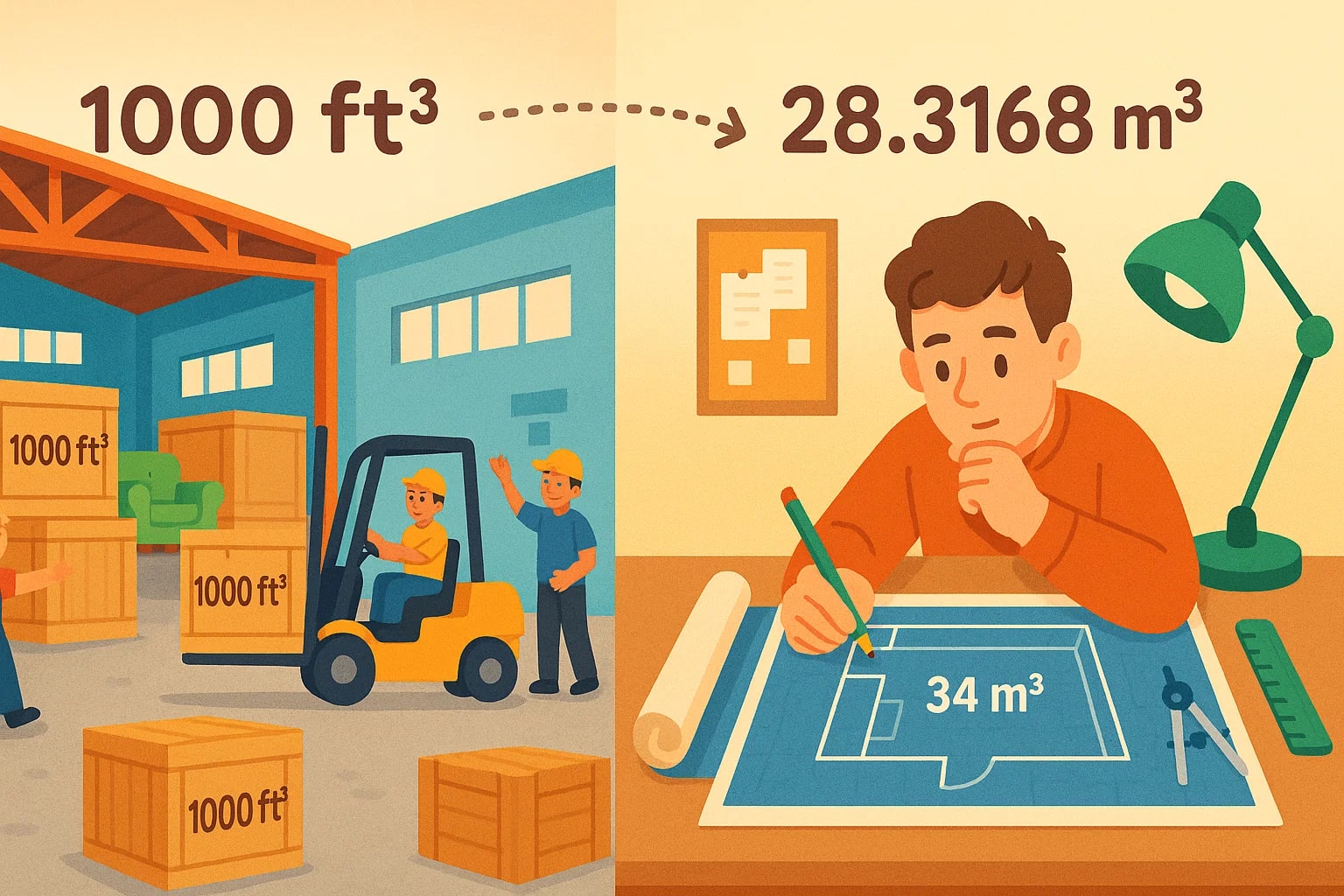cubic foot to cubic yard – How to convert ft³ to yd³
The conversion between cubic feet and cubic yards is a staple in construction, landscaping, and shipping. Both units are part of the imperial system, but they cover very different scales. Cubic feet are useful for smaller spaces, while cubic yards are reserved for larger quantities of materials like soil, gravel, and concrete.
What is a cubic foot (ft³)?
A cubic foot is the volume of a cube with each side equal to 1 foot. It equals about 28,316.8 cm³. This unit is common in the United States for describing smaller volumes such as furniture, shipping boxes, and room capacity.
What is a cubic yard (yd³)?
A cubic yard is the volume of a cube with each side equal to 1 yard (3 feet). It equals 27 ft³. This unit is widely used in construction, especially for bulk materials like cement, mulch, or gravel. Ordering supplies in cubic yards helps contractors and landscapers calculate loads more easily.
Conversion formula – cubic foot to cubic yard
The relationship is straightforward because a yard equals 3 feet.
The base equivalence is:1 yd³ = 27 ft³
To convert cubic feet to cubic yards:1 cubic yard = cubic foot ÷ 27
To convert cubic yards to cubic feet:1 cubic foot = cubic yard × 27
Examples:
-
54 ft³ = 2 yd³ -
3 yd³ = 81 ft³

For quick results beyond ft³ and yd³, Jetcalculator’s Volume Converter and other Conversion Tools make switching between units simple for both professionals and everyday use.
Do you know?
-
In landscaping: Mulch, gravel, and soil are almost always sold in yd³, but homeowners often measure their gardens in ft³ before ordering.
-
In concrete work: Contractors calculate concrete volume in cubic yards for truckloads, while foundation details may still be measured in cubic feet.
-
In shipping: Large freight dimensions sometimes start in cubic feet but are rounded up to cubic yards for easier load planning.
From backyards to building sites
Imagine a homeowner planning a garden project. They calculate the space of a flower bed at 162 ft³. When they order soil, the supplier quotes the volume in cubic yards — which is 6 yd³. Without the conversion, it would be easy to over- or under-order.
On construction sites, the same applies on a larger scale. While architects may design a foundation using cubic feet for precision, cement is delivered by the truckload in cubic yards. The ability to switch smoothly between these units keeps the project efficient.

A unit made for heavy lifting
The formula 1 yd³ = 27 ft³ highlights why cubic yards are favored for bulk. It scales up from manageable cubic feet into a measure that fits truckloads, landscaping deliveries, and concrete pours.
By using cubic feet for details and cubic yards for the bigger picture, professionals and homeowners alike can plan projects with accuracy — whether it’s a backyard upgrade or a building foundation.

